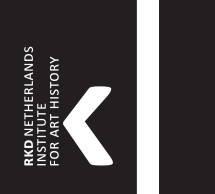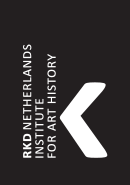6.2 Flemish Primitives and 16th-Century Netherlandish Paintings

1
Hans Memling
Last Judgement, c. 1467-1471
Gdańsk, Muzeum Narodowe w Gdańsku, inv./cat.nr. SD/413/M - M/568/MPG

2
attributed to Bartholomäus Miltwitz
Interior of the Saint Mary's Church in Danzig with the tryptich of Hans Memling, c. 1635
Gdańsk, Bazylika Mariacka
In 1956, Poland’s most precious work of art, which had been housed in Gdańsk for almost 500 years, returned from the Soviet Union: the Triptych of the Last Judgement by Hans Memling1 – one of two monumental works by the master painter from Bruges [1]. The history of its acquisition is quite unusual. Originally commissioned by Angelo Tani, the representative of the Medici bank in Bruges and destined for his family chapel in the church of Badia Fiesolana near Florence, the triptych was en route from the Netherlands to Italy on the galleon ‘San Matteo’ in 1473. The ship was captured by a Gdańsk pirate, Paul Benecke, and the altarpiece unexpectedly found its way to his home town, where it was placed in the church of Our Lady [2]. Despite the protests and complaints of the Duke of Burgundy, Charles the Bold and Pope Sixtus IV, the triptych remained in Gdańsk. It was removed twice: by Napoleon in 1807 (to be returned in 1816), and during the Second World War, when the Germans took it to Thuringia for safety. Found there by the Red Army, it was taken to the Hermitage in St. Petersburg (then Leningrad).
Apart from this breathtaking work there are not many Flemish Primitives in Poland: a group of small devotional pictures from the workshops of Dieric and Aelbert Bouts in Kraków and Warsaw [3-5]; a Passion altarpiece with wings painted in the workshop of Colijn de Coter, also in Warsaw [6-7]; and a splendid composition showing the Martyrdom of Saint Crispin and Crispinian from the Wilanów collection [8], rendered with a rare epic power of narration. This work, by Aert van den Bossche, is the central panel of a triptych, the right wing of which – separated and transferred to canvas – is preserved in the Museum van de Stad in Brussels (averses) and in the Pushkin Museum in Moscow (reverses).2

3
Albrecht Bouts and studio of Albrecht Bouts
The Head of Saint John the Baptist (Mt 14, 6–12; Mk 6, 21–29), after 1500
Warsaw, Muzeum Narodowe w Warszawie, inv./cat.nr. M.Ob.845 MNW

4
Albrecht Bouts and studio of Albrecht Bouts
Mater Dolorosa, c. 1500
Kraków, Muzeum Ksiazat Czartoryskich, inv./cat.nr. MNK XII-258

5
follower of Dieric Bouts
The Annunciation, c. 1480
Kraków, Muzeum Ksiazat Czartoryskich, inv./cat.nr. MNK XII-256

6
studio of Colijn de Coter
Passion altarpiece of Pruszcz Gdański (Praust): The last supper, c. 1500
Warsaw, Muzeum Narodowe w Warszawie, inv./cat.nr. Śr.13/1–7 (187369) MNW

7
studio of Colijn de Coter
Passion altarpiece of Pruszcz Gdański (Praust): The Ascension, c. 1500
Warsaw, Muzeum Narodowe w Warszawie, inv./cat.nr. Śr.13/1–7 (187369) MNW

8
Aert van den Bossche
Martyrdom of SS Crispin and Crispinian, c. 1490-1500
Warsaw, Muzeum Narodowe w Warszawie

9
Anonymous Southern Netherlands (hist. region) second half 15th century
The crucifixion, second half 15th century
Poznań, Muzeum Narodowe w Poznaniu, inv./cat.nr. MNP FR 443

10
Jean Bellegambe (I)
The Lamentation tryptich
Warsaw, Muzeum Narodowe w Warszawie, inv./cat.nr. M.Ob.15 MNW

11
circle of Adriaen Isenbrant
Portrait of the donor Mathias Laurin (Lauwerin) (left wing), The immaculate conception (centre panel) and portrait of the donor's wife Françoise Ruffault (right wing), first half 16th century
Warsaw, Muzeum Narodowe w Warszawie, inv./cat.nr. M.Ob.16
Poznań Museum owns an extremely interesting big panel of the Crucifixion dated to the 2nd half of 15th century with motives bearing evident influence of both Jan van Eyck and Robert Campin [9].3 The Lamentation Triptych by Jean Bellegambe from ca 1515–1520 [10] (considered by Robert Genaille in 1963 the earliest work by this Douai painter from c. 1495) and a Triptych of the Immaculate Conception by a painter from the circle of Adriaen Isenbrant [11], in spite of their late dating, still belong to the epoch of early Netherlandish painting.4
The Northern Renaissance, or ‘Antwerp Mannerism’, is represented by objects such as the painted panels of the St. Reinhold Altarpiece, an early masterpiece by Joos van Cleve, which is in Warsaw [12]. This work features a self-portrait of the young artist as St. Reinhold in the reverse of the wings [13].5 The Virgin with Child and a Lamb by Quinten Massijs in Poznań6 [14] illustrates the artist’s effort to combine the local Netherlandish tradition with the Italian inspirations of Leonardo da Vinci. A similar tendency can be found in Venus and Cupid [15], a war loss recovered for the Jagiellonian University Museum in Kraków in 1984, painted by the former’s son, Jan Massijs, who seeks to unite the influence of Titian and the School of Fontainebleau.7 Italianate Mannerism in its most dramatic form is present in the Ecce Homo Triptych, now in Warsaw, one of the finest works by Maarten van Heemskerck [16],8 and Jan Sanders van Hemessen’s Holy Family in Wawel Royal Castle, Kraków [17].9

12
Joos van Cleve and studio of Joos van Cleve and Anoniem and Anonymous
The Presentation in the Temple, Ecce Homo (left wing); The Baptism of Christ, The Last Supper, Christ before Pilate, The carrying of the Cross (centre); The Agony in the Garden, The Crucifixion (right wing); Man of Sorrows with saints (predella), 1515-1516
Warsaw, Muzeum Narodowe w Warszawie, inv./cat.nr. M.Ob.2190 MNW

13
Joos van Cleve
Saint Reinhold, self-portrait of Joos van Cleve, 1515-1516
Warsaw, Muzeum Narodowe w Warszawie, inv./cat.nr. M.Ob.2190 MNW

14
Quinten Massijs (I)
Madonna and Child with a lamb against a landscape, c. 1520
Poznań, Muzeum Narodowe w Poznaniu, inv./cat.nr. MNP FR 441

15
Jan Massijs (II)
Venus en Amor, c. 1560
Kraków, Muzeum Uniwersytetu Jagiellońskiego

16
Maarten van Heemskerck
De Heilige Johannes de Evangelist met Jan van Drenckwaerdt (links), Ecce Homo (midden), de Heilige Margaretha met Margaretha de Jonge van Baertwyck (op de buitenzijde in grisaille: de Heiligen Johannes de Evangelist en Margaretha), dated 1544
Warsaw, Muzeum Narodowe w Warszawie, inv./cat.nr. M.Ob.595 MNW

17
Jan van Hemessen
Holy Family with John the Baptist and Saint Elisabeth, c. 1552
Kraków, Zamek Królewski na Wawelu, inv./cat.nr. 117

18
follower of Juan de Flandes
Ecce Homo, second half 16th century
Lublin, Katolicki Uniwersytet Lubelski Jana Pawła II (Instytut Historii Sztuki), inv./cat.nr. MU KUL I-121

19
Ambrosius Francken (I)
Christ and the Children
Radomsko, St. Lambert Church (Radomsko)

20
Bernaert de Rijckere
Portrait historié of the presenting of Moses to Pharaoh's daughter (Exodus 2: 1-10), c. 1562
Warsaw, Muzeum Narodowe w Warszawie, inv./cat.nr. M.Ob. 279 MNW
Worth mentioning are also: one of the versions of the Ecce Homo by a follower of Juan de Flandes in the Catholic University of Lublin [18],10 an altar painting by Ambrosius Francken Christ and the Children in the parish church at Radomsko [19]11 and Bernaert de Rijckere’s Finding of Moses – Allegorical Family Portrait in Warsaw [20].12 A very fine version of the Saint John the Baptist Preaching by Pieter Brueghel the Younger is in the collection of the National Museum in Kraków [21].13
The art of portraiture in the 16th century is represented by such works as the portrait in profile of Isabel von Habsburg, the Queen of Danes attributed to the Master of the Legend of Mary Magdalen [22], Jan Mostaert’s Portrait of a Courtier [23] in the Princes Czartoryski Museum in Kraków 14 as well as the beautiful likeness of Isabel of Portugal by the little-known painter William (or Guillim) Scrots in Poznań [24].15
Two charming paintings by Master of the Female Half-Lengths: Lady at the Virginal in Poznań [25] and a Lady Writing a Letter in Kraków (Czartoryski Museum) [26] make a link to the genre painting at the time of its dawn.16 The late Renaissance epoch is closed with an important painting by Pieter Aertsen in Warsaw, dating from the very last year of his life and showing, in the form of a frieze, scenes illustrating the seven works of Christian mercy [27]. Rendered as a genre piece, in the setting of a town square laid out according to the models in Sebastiano Serlio’s architectural treatise, the painting is a rarity.17

21
Pieter Brueghel (II) after Pieter Bruegel (I)
The Sermon of Saint John the Baptist, after 1566
Kraków, Muzeum Narodowe w Krakowie, inv./cat.nr. XII-A-619

22
attributed to Master of the Magdalen Legend
Portrait of Isabella of Habsburg (1501-1526), Queen of Denmark, c. 1515
Kraków, Muzeum Ksiazat Czartoryskich, inv./cat.nr. XII-299

23
Jan Mostaert
Portrait of a man putting on a glove, c. 1520
Kraków, Muzeum Ksiazat Czartoryskich, inv./cat.nr. XII-637

24
William Scrots
Portrait of Isabel of Portugal (1503-1539), 1530s
Poznań, Muzeum Narodowe w Poznaniu, inv./cat.nr. MNP Mo 134

25
Master of the Female Half-Lengths
Lady at a clavichord, first half 16th century
Poznań, Muzeum Narodowe w Poznaniu, inv./cat.nr. MNP FR 442 (oud MNP Mo 115)

26
Master of the Female Half-Lengths
Lady writing a letter, first half 16th century
Kraków, Muzeum Narodowe w Krakowie

27
Pieter Aertsen
The Seven Works of Christian mercy, dated 1573
Warsaw, Muzeum Narodowe w Warszawie, inv./cat.nr. 121817 (or M.Ob.2183)
Notes
1 Walicki/Białostocki 1981; Trzeciak 1990; Purc-Stępniak 2012.
2 Gombert 2005, cat. no. 12; for the Flemish Primitives in Polish collections, see Białostocki 1966.
3 Michałowski a.o. 2005, pp. 166–168.
4 Genaille 1963; Jabłońska 2012; Kozak/Ziemba/Waszkiel 1999, cat. no. 10 and cat. no.105.
5 Hand 2004, pp. 31–35, figs. 21–25, cat. no. 8 (p. 117).
6 Michałowski a.o. 2005, pp. 170–173.
7 Winters 2002, p. 74; Jasińska 2003, pp. 209-213.
8 Recently restored as part of the conservation partnership project between the National Museum in Warsaw and the J. Paul Getty Museum, Los Angeles, it is thoroughly treated in the monograph by Woollett/Szafran/Phenix 2012.
9 Białostocki 1960, cat. no. 27.
10 Przylicki 2010; Weniger 2011, pp. 376–370, cat. no. Juan N72.3, fig. 306, p. 269; Przylicki 2013, p. 21.
11 Białostocki/Walicki 1957, no. 146.
12 Michałkowa 1992, cat. no.61.
13 Dec/Wałek 2010, p. 478.
14 Dec/Wałek 2010 A, pp. 593–595.
15 Michałkowa 1992, cat. no. 53.
16 Gołąb/Soćko 2008, p. 104; Dec/Wałek 2010, p. 594.
17 Folga-Januszewska/Ziemba 2004, cat. no. 38.

